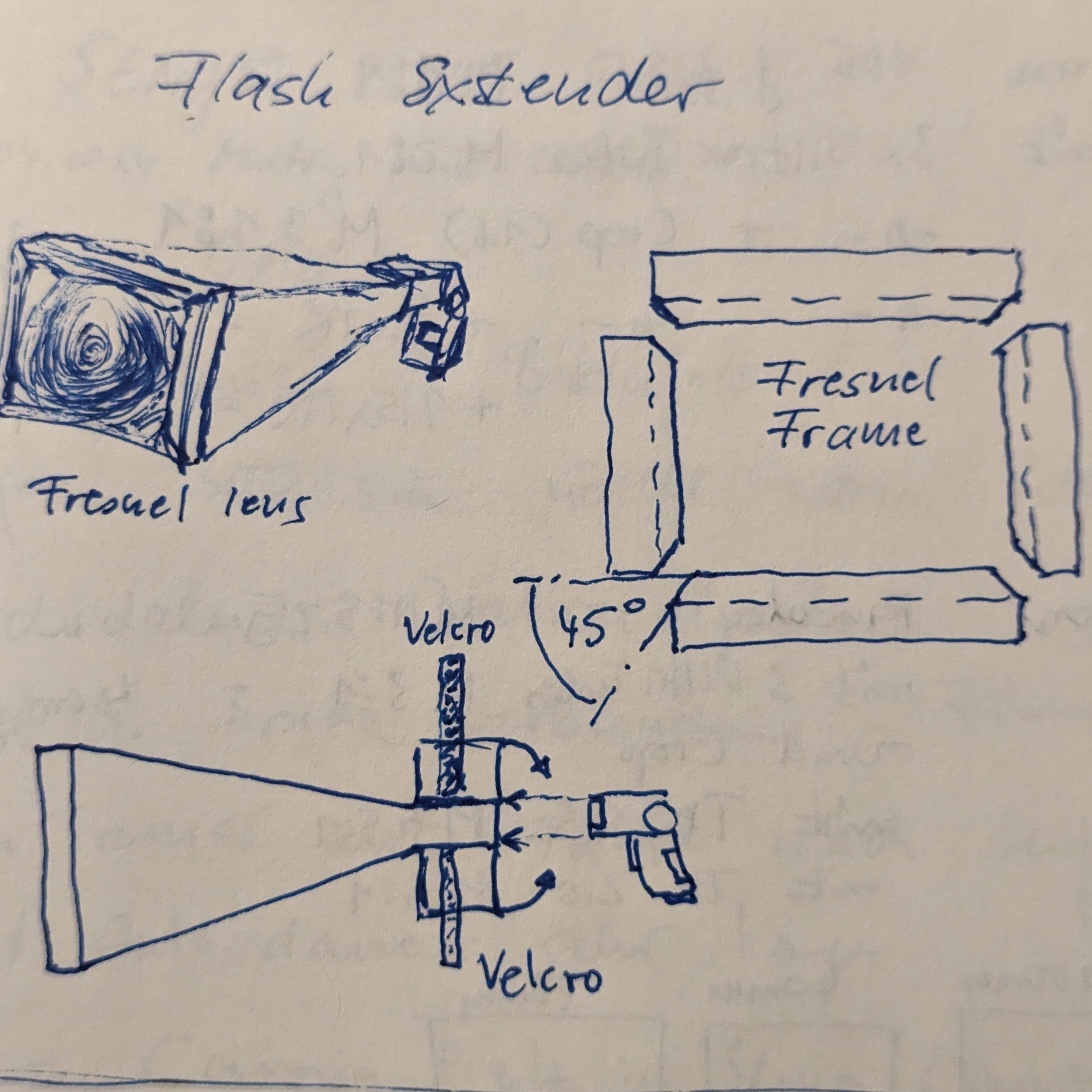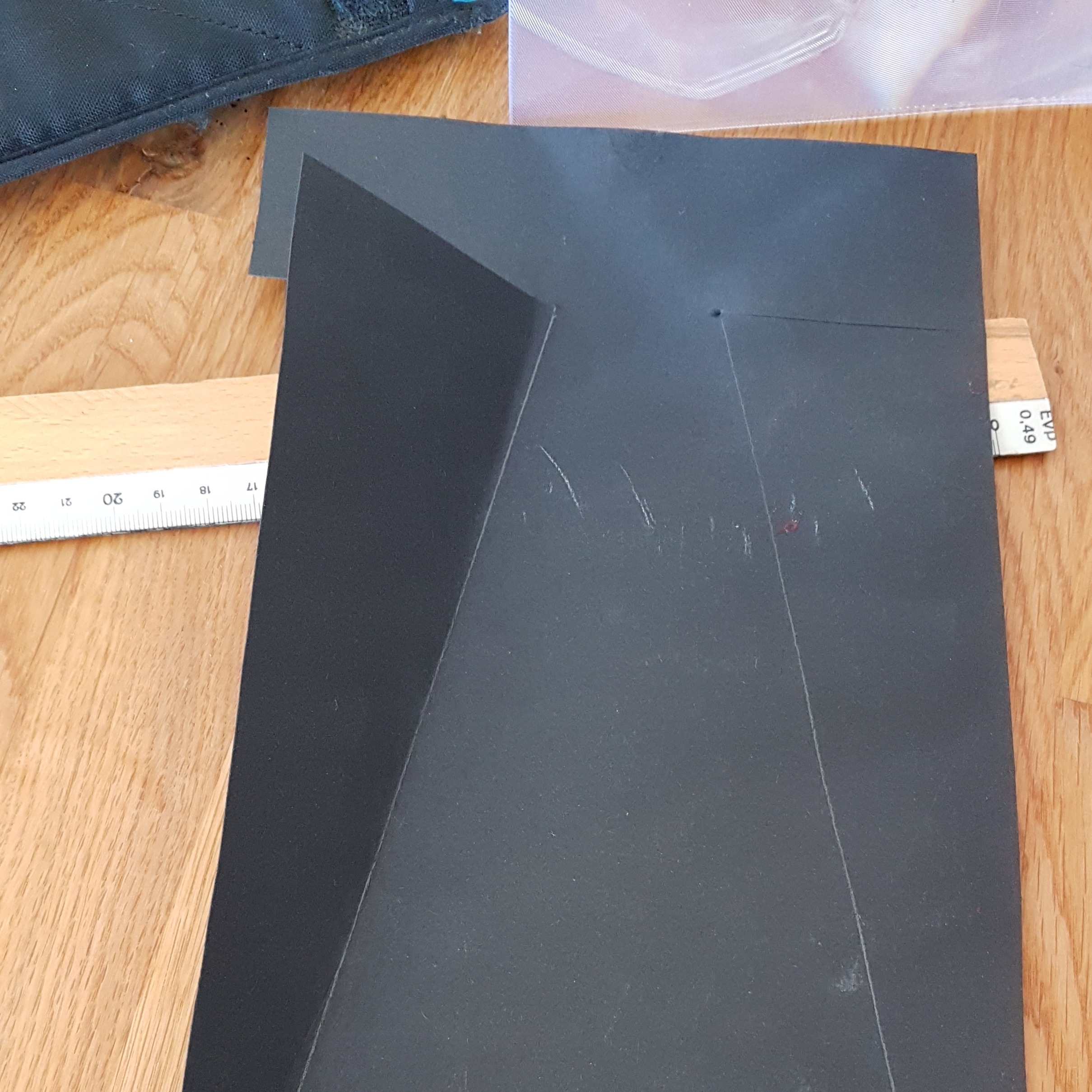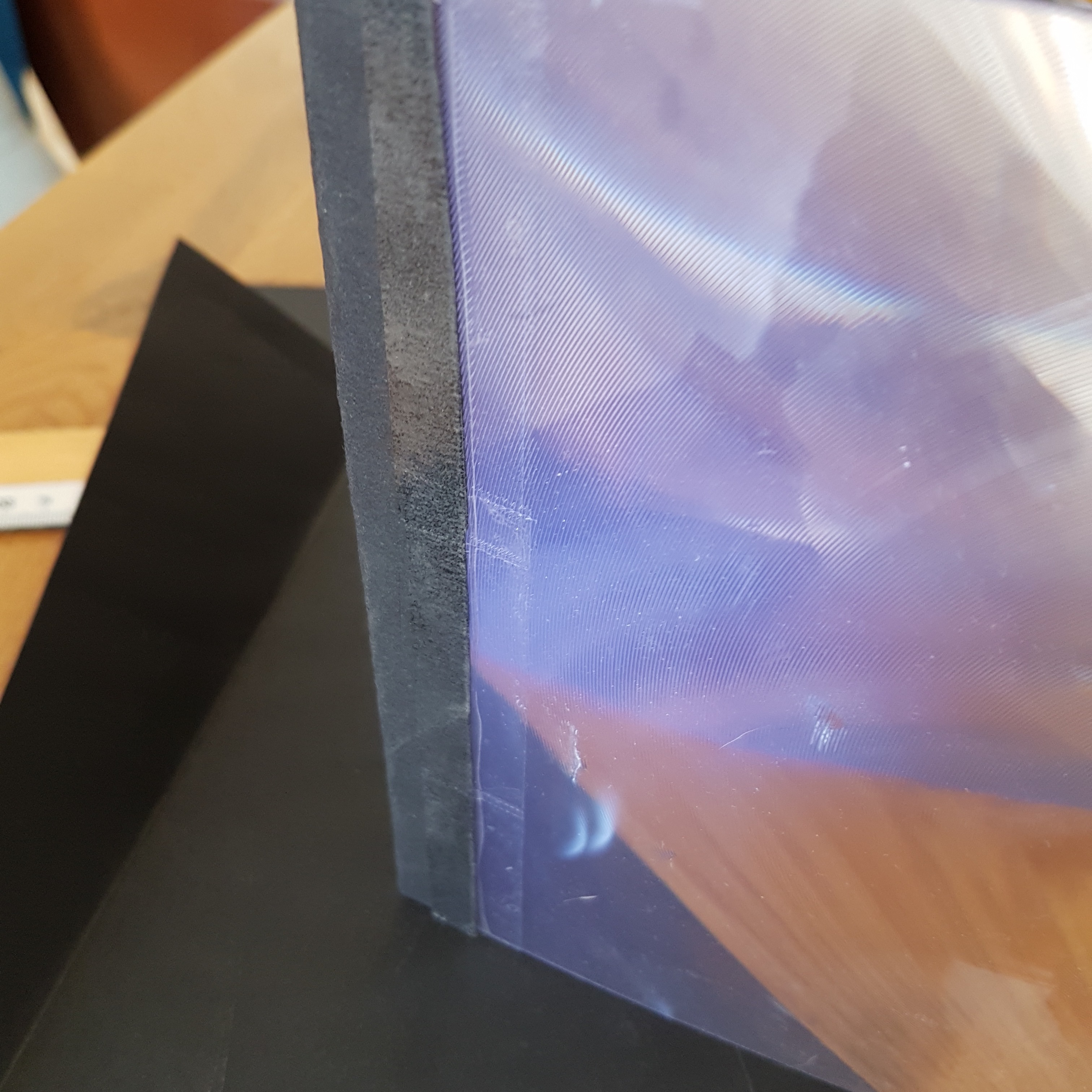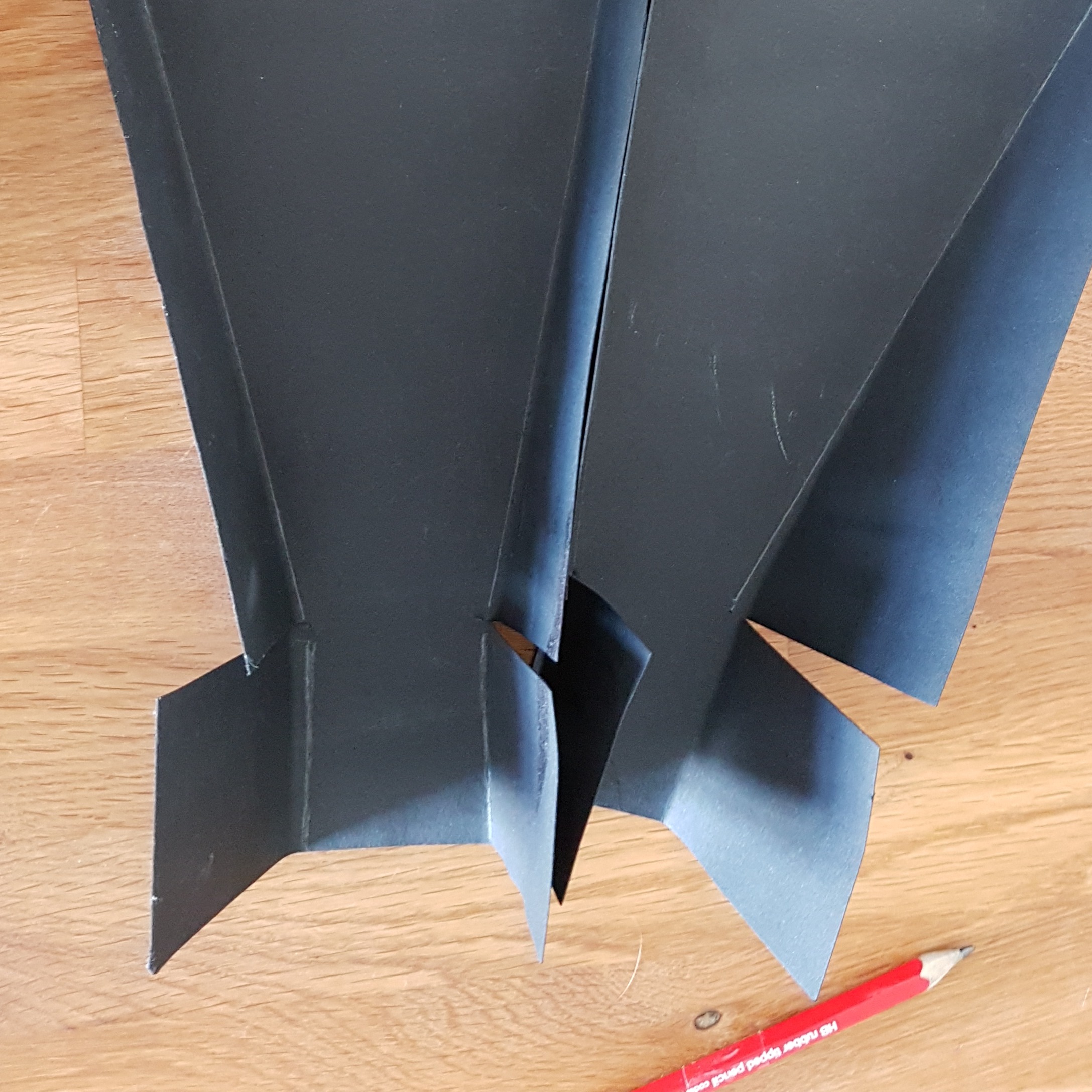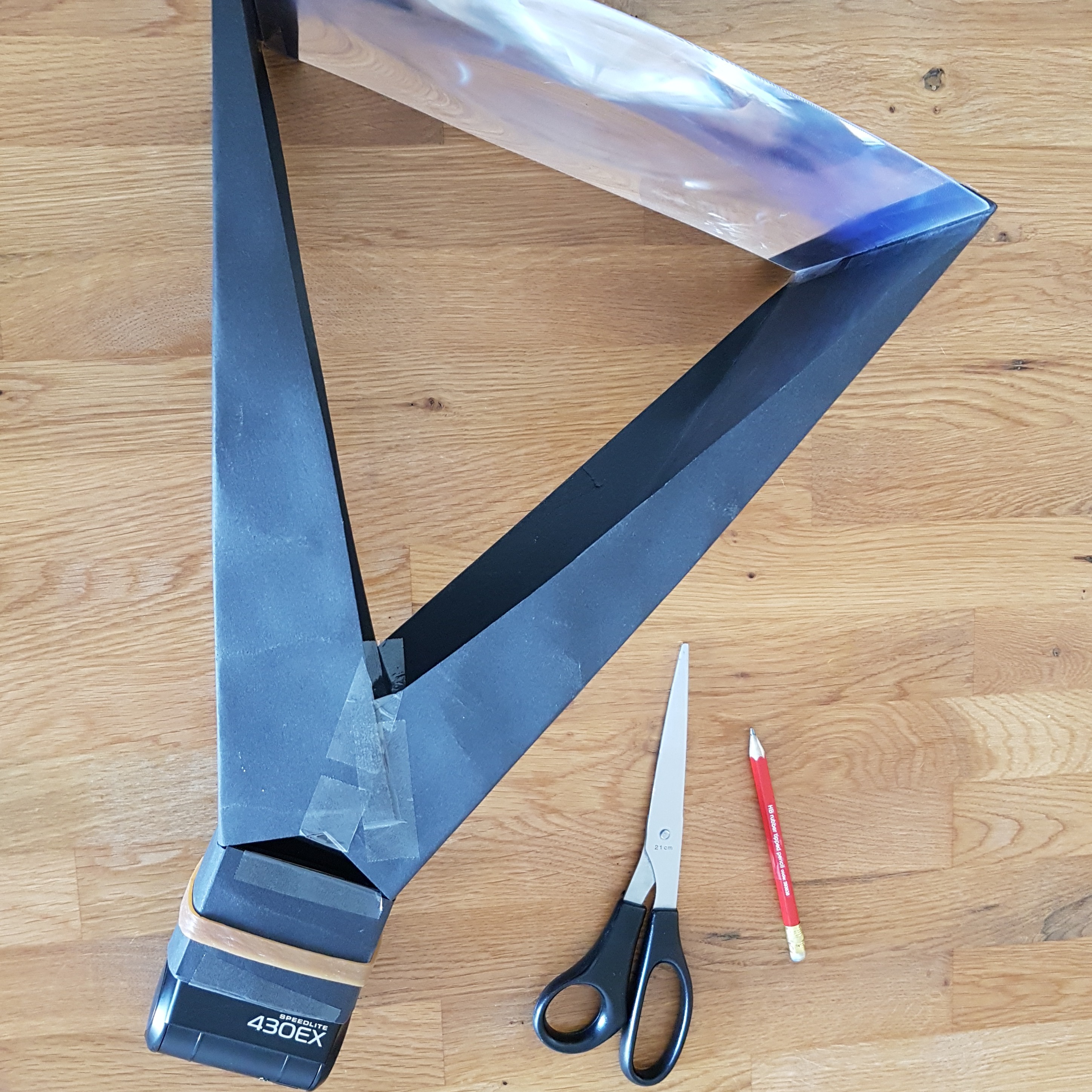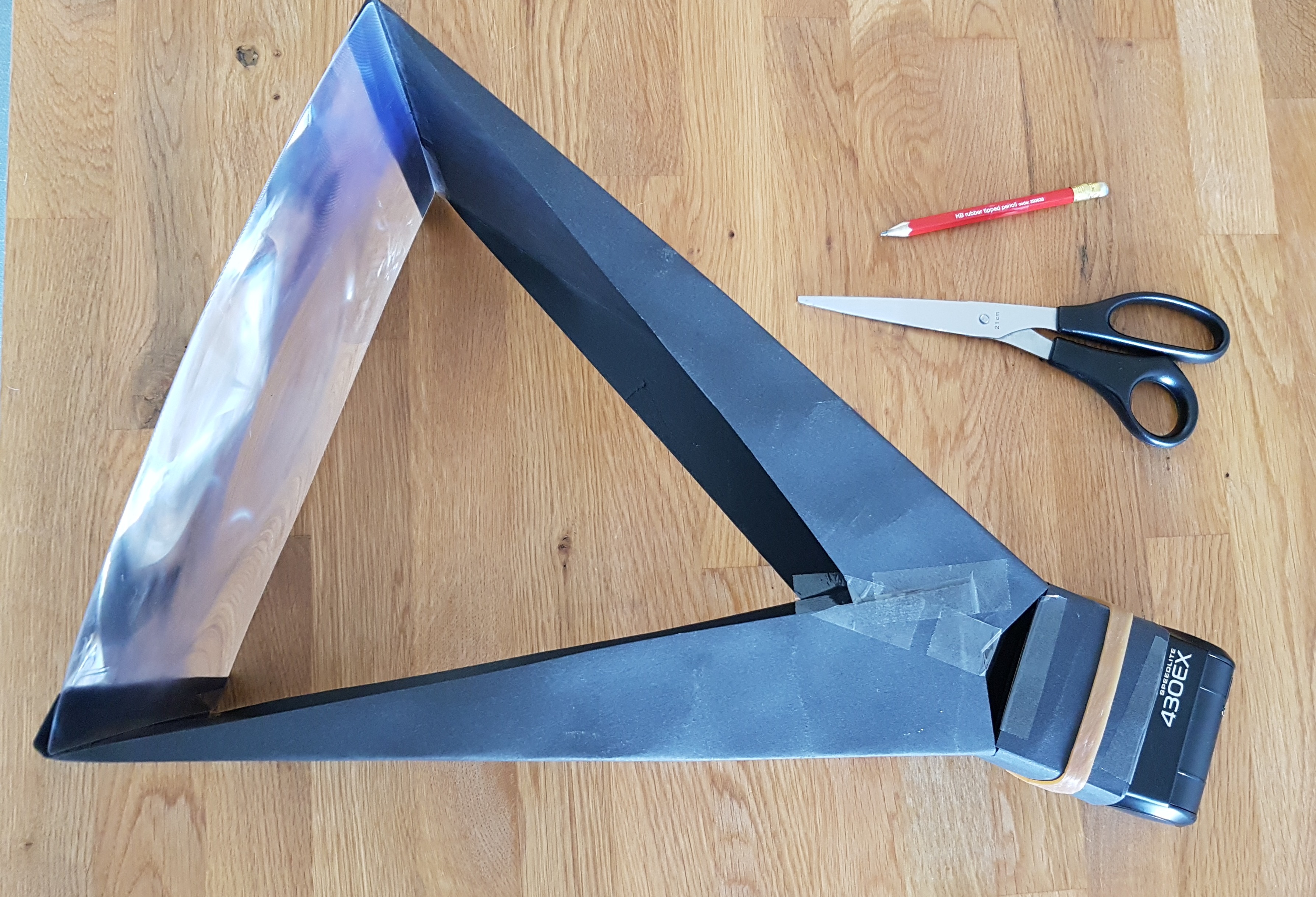
First flash extender made of paperboard
DIY Flash extender
Here is an interesting project for photographing birds in particular. Instead of an expensive MagBeam, you can also use an inexpensive Fresnel lens to focus the light from your flash. This allows you to take photos with a smaller aperture and a shorter flash duration. This gives you a greater depth of field and allows you to virtually "freeze" the movements of birds at a higher speed on a longer distance to your subject than the regular range of your flash.
On the left you can see my first flash extender made from paperboard as a first prototype.
